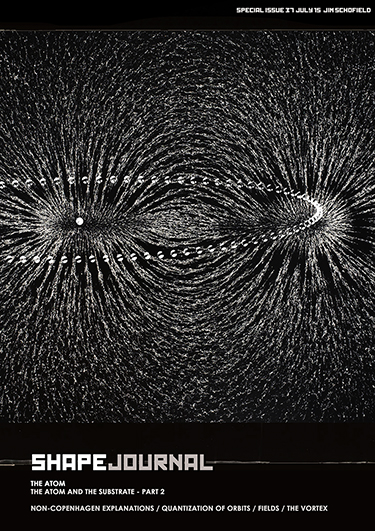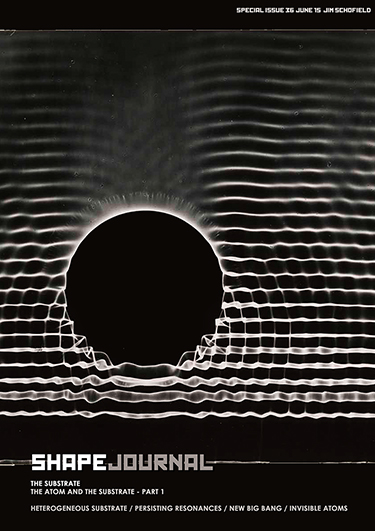 |
“The Cognitive Art of Feynman Diagrams” by
Edward Tufte - installation at the Fermilab art gallery |
Why Analogistic Models Contain Significant Content
Without a doubt the actual content of analogistic models has to
be the key to their relevance in scientific explanation. For though
they are clearly never fully accurate descriptions, and certainly
also are always less than totally accurate explanations of the
phenomena they are used to tackle, they are also never totally
arbitrary inventions, they must contain something objective
about the modelled situation.
Let us attempt to reveal what their contained objectivity can be.
Now, though we can, and do, insist that they are analogues for
what we are investigating, they are not, and could never be, 100%
accurate – containing a full set of one-to-one mappings, they are
intrinsically similar situations, and they, therefore, reflect the
common sequences, and kinds of entities and properties found
throughout Reality quite naturally.
Perhaps surprisingly though, even artificial analogistic models
can also be profitably constructed to aid in the understanding of
newly addressed phenomena, as long as the constituents involved
are taken from concrete evidence of possible components
occurring elsewhere in concrete Reality. The method then is to
involve such initially unrelated elements into a model, expressly
to deliver the actually noticed properties of the thing that you are
attempting to explain. Indeed, even more surprisingly, it is often
these kinds of analogistic models that deliver the most profound
insights, and can also demolish false assumptions dramatically.
I will definitely include the mention of such a model later in this
paper.
So, let us start by looking at a series of valuable examples of
various kinds of analogistic models.
James Clerk Maxwell’s famous model of the Ether (that was then
presumed to fill all of the Empty Space in the Universe) was just
such an informed and creative construct. He knew about many
kinds of phenomena, which he had to explain, and the usual
simple (and magical) Ether was just too vague to explain anything
adequately for him. So, knowing what he wanted to produce
from his model, he brought together (without any evidence) the
sorts of constituent that might, if appropriately organised, deliver
what hew knew was necessary. He adventurously constructed
“vortices” and “electrical particles” into an analogistic model,
and from this he managed to deliver his famous equations of
electromagnetic radiation.
His model did not by any means reveal the actual form of the
Ether, and his constructs didn’t exist as such, but his model
delivered a great deal more than any of its predecessors, and
even more than he designed it to deliver. His resultant Equations
were revolutionary.
Now, before we explore why such “fictitious” models worked,
let us look at some others. Einstein’s Space-Time continuum
was also an analogistic model.
Once again, no one could prove such a thing actually existed,
but it did deliver what Einstein knew were properties that needed
explanation. His famous Theory of Relativity was based upon
this model, and many things, in addition to what he consciously
put into it, which came out of his constructs have since been
confirmed in Reality.
Even Niels Bohr’s original model of the structure of the atom
with a central positively charged nucleus, surrounded by orbiting
electrons in an entity which was mostly empty space, was taken
from the Planet-moon systems observed in our Solar System.
It was not a
true description of it, but yet another analogistic
model.
Once again, it defined far more than the models that
it replaced, and that was again because it contained more real
features within its conceived-of forms.
Even later, when confronted with a confusing maze of
“fundamental particles”, Richard Feynman devised his famous
Feynman Diagrams – they were, of course, the most abstract
of analogistic models, and delivered what no other models could,
namely what was called Quantum Electro Dynamics (QED) –
the most accurate and useable way of dealing with this amazing
Particle Zoo.
And, there is, perhaps, the most audacious version of an
analogistic model produced by Yves Couder in his attempt
to find a new way of revealing the secrets of the sub atomic
world, by modelling it in the Macro World out of unbelievable
components. He revolutionised experimental physics by
devising and constructing a model entirely out of silicone liquid
and various vibrations, resonances and crucial recursions. He
managed to create his famous “Walkers” entirely from the above,
which was a kind of self-maintaining entity with properties
closely comparable to those within the atom.
Finally, the author of this paper, confronted the anomalies
of the famed Double Slit Experiments, decided to devise an
undetectable Paving of Empty Space composed of undetectable
particles – in fact mutually orbiting pairs, each consisting of
one electron and one positron, which, because of their opposite
matter types and electrostatic charges, became undetectable
in this joint form. Yet, this paving actually fully explained the
anomalies of the Double Slit Experiments without any recourse
to the flights of fancy delivered by the Copenhagen Interpretation
of Quantum Theory, when that is used as the sole dependable
source for dealing with all sub atomic phenomena.
All the anomalies fell away! Nothing of idealist philosophy was
needed to make sense of what occurred, the new materialistic,
analogistic model of Empty Space did it without difficulty. [It
was both as analogistic, and as artificial, as Maxwell’s model of
the very same thing].
Needless to say, a barrage of criticism followed, either from the
mechanical materialists of the old school, or from the idealists
of the new school, with, as a banker, the fact that no such Paving
had been physically detected! But, of course, that isn’t the point,
is it? What is important has to be whether this analogistic model
explained a great deal more than anything else could.
Now, how can we explain these relative successes clearly based
upon non-existing constructs?
Their value is that they are determined by the features in Reality
to be explained – and, initially, at least, this can only be achieved
by organising what is generally known into a purposely constructed
model, aimed by using real features from elsewhere,
into an amalgam, which delivered what was required.
Such a model would never be the Absolute Truth, but it can be
both intelligently and intelligibly constructed to contain more
Objective Content – elements, parts or aspects of the Truth,
than what it replaces. And in doing so, it makes the actual
real phenomenon more understandable: and also by crucially
revealing things that were absent previously, makes further
developments more likely, if only by establishing a whole new
kind of model, which allows us a great deal more to consider
with some aspects real, and others intelligent placeholders for
what has yet to be revealed.
But, why should these analogies even be available?
Why should such similar (though possibly also profoundly
different) resonances occur in such different contexts? The
answers must be contained in what it is that is similar in all
phenomena, and hence possible everywhere in one way or
another?
We really have to address the question, “What is common
throughout all possible phenomena that always guarantees that
such analogies will certainly exist?”
It must be that they are all – every single one of them, always
produced as the result of many different, simultaneous factors,
which will always come together into overall situations of
Stability (if only temporary). Form the possible results of such
complexities, when the factors present are NOT separable,
eternal laws, but on the contrary, mutually interacting and
modifying arrangements, which will finally settle into a selfmaintaining
overall stability.
Clearly, features will become present which are a result of this
higher level of stability, and hence about how such mutually
modifying factors arrive at such a state. Such properties will be
true, at least at the abstract level, of all such systems. Indeed,
when you think about it, it is likely that all phenomena are such!
The search for fundamental particles and their basic eternal laws
is therefore a pluralist myth. No matter which “law” you choose
to address, it is certain to be the stability reached by multiple
factors at an even lower level!
The aims of pluralist Sub Atomic Physics are impossible to
achieve, with the assumptions and principles that underlie the
entire area of study.
The Principle of Reductionism is clearly based entirely upon
Plurality, and hence assumes that Analysis will be always
possible, all the way down to its targeted Fundamental Particles.
These suggested analogistic commonalities seem to indicate very
different relations could be expected to get to such stabilities in
very similar ways.
Such things as spins and orbits are likely to occur at all levels, as
are things like vibrations, resonances and recursions.
It is very likely that this is what we are settling upon with our
analogistic models.
Not ultimately Absolute Truths, but commonly occurring natural
resonances, which we term as Common Objective Contents.
This article has been taken from the new special issue of the Shape journal
Analogistic Models III




















